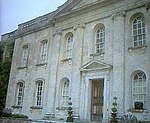Abbotsbury Castle

Abbotsbury Castle is an Iron Age hillfort in south west Dorset, England, situated on Wears Hill above the village of Abbotsbury, seven miles west of Dorchester and the famous hill fort at Maiden Castle. It is situated on a high chalk hill overlooking the English Channel, and in its day was the front line of defence from invasion. The earthworks cover an area of about 10 acres (4.0 ha), of which about 4.5 acres (1.8 ha) are inside the ramparts.The fort was occupied by the Celtic Durotriges tribe, but when the Romans invaded in AD 43, the second Augustian legion of Vespasian took the fort quickly with little struggle before moving on to Maiden Castle. There is no evidence that the Romans settled at Abbotsbury Castle as they did at some other hill forts.
Excerpt from the Wikipedia article Abbotsbury Castle (License: CC BY-SA 3.0, Authors, Images).Abbotsbury Castle
B3157,
Geographical coordinates (GPS) Address External links Nearby Places Show on map
Geographical coordinates (GPS)
| Latitude | Longitude |
|---|---|
| N 50.67825 ° | E -2.63118 ° |
Address
Abbotsbury Castle
B3157
DT3 4JY , Abbotsbury
England, United Kingdom
Open on Google Maps










